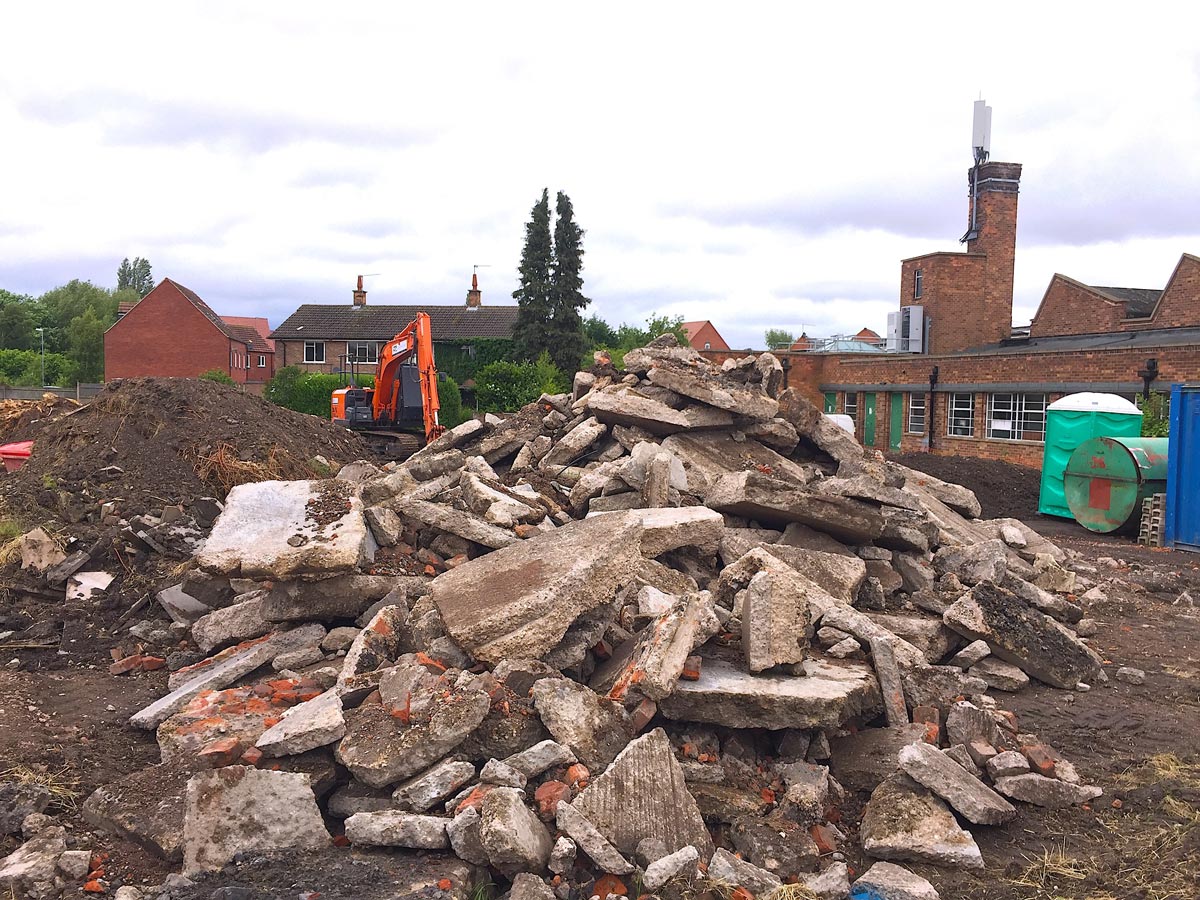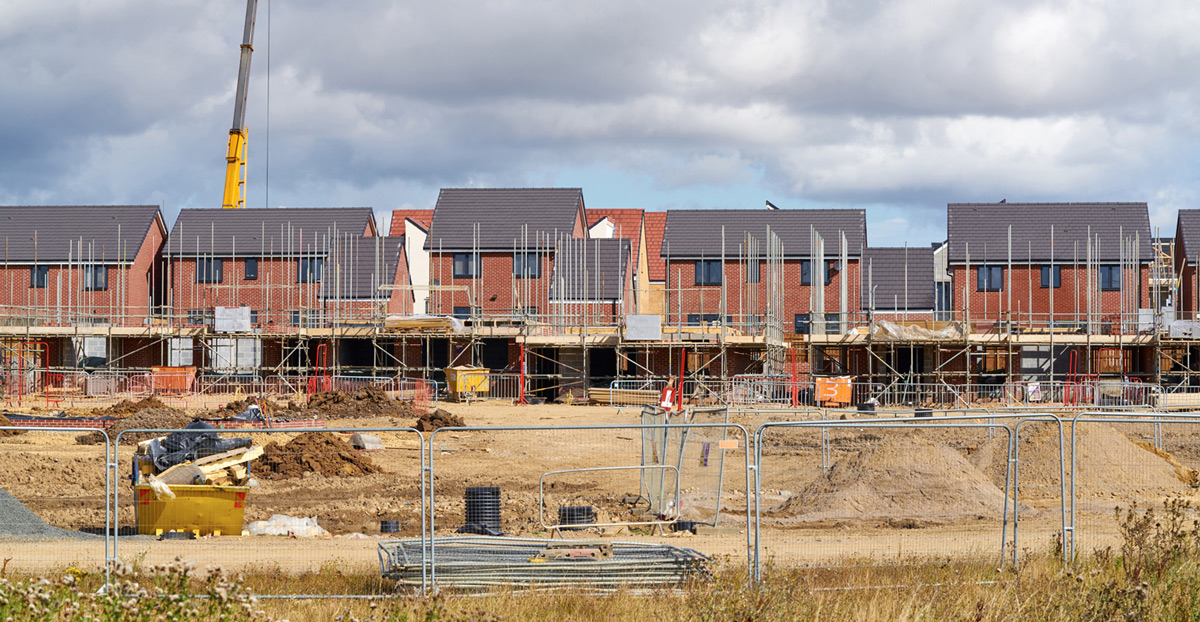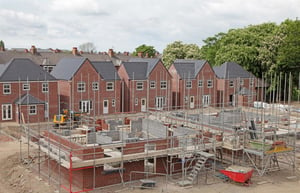
The first houses I was involved in building were council house for a London borough authority. They were built to a, for the time, very high standard. That was in 1974/75 and I happened to pass the site maybe 5 years ago and those houses are still standing, although no longer council-owned.
In 1977 I switched jobs to a private house building company – now defunct – and the houses were built to a, for the time, very poor standard.
I know that at least one estate I worked on has been demolished and I would not be surprised if they all have.
The council houses had a design life of 60 years, they have so far lasted 45 years and are likely to exceed their design target. The private houses also had a design life of 60 years and I don’t know how long they lasted but it was clearly less than 45 years.

The design life, now extended to 80 years, is the basis of building regulations and honoured more in the breach, then as it is now. Building regulations cover many, many issues, from foundations to fire resistance to heat and light, and all are targeted at ensuring a house (or other property) provides safe, secure, comfortable accommodation for a minimum of 80 years. The council houses succeeded because they adhered to the spirit as well as the letter of the building regulations, using good quality materials and allowing craftsmen time to properly deploy their skills to construct a good, robust property.
The private builder worked down to a budget rather than up to a standard. No corner was left uncut; every possible ha’porth of tar was saved. The only consideration given to quality was how to reduce it. It was at a time of house price boom and the pressure was to get it finished quick.
In virtually every way those houses were the very antithesis of sustainable – they could not go on and they did not. And it has to be recognised that this practice still goes on. In early 2017 my daughter bought a new house from a major builder (against her father’s advice) with which she is delighted. It is much better than the houses I was building in the 70’s in many ways but to the educated eye is it clear that the strategy was to minimise build cost by getting close enough to the building regulations to dissuade the control officer from having a row about it.
They were advertised as being “high quality, high efficiency” homes but what does that mean to the average home buyer. They don’t have the knowledge to differentiate between high efficiency and building regulations standard efficiency – and the reality is that they do not quite meet even that standard. Close, but not quite.
There is a disconnect between what is set out in the drawings and specification and what is actually done on-site. That has been true for at least as long as I have been involved in the industry but seems to remain unrecognised by building control. Building control officers do what they can but they do not go to work every morning looking to get punched in the face, and that is what is likely to happen if they insisted on the letter, and spirit, of the regulations.
 And it can be argued that the building regulations are themselves not adequate for purpose. A very senior official once told me that the regulations are a compromise between what the government and BRE want and what the building industry is prepared to accept.
And it can be argued that the building regulations are themselves not adequate for purpose. A very senior official once told me that the regulations are a compromise between what the government and BRE want and what the building industry is prepared to accept.
In practice, this means that the industry gets to lower the bar and are then allowed to scrape under it. The consequence of this is that it sets the standard that building contractors become used to working to. The difficulty is then getting the contractor to step up to a better standard because they ‘know’ they don’t need to.
How many times have you heard “I have been doing it this way for 30 years and its always been good enough before”. The difficulty lies in the detail, the minutiae of the build. For the self-builder wanting a more sustainable home near enough is not good enough.
It is fair to say that the self-builder operates under the same budget and time constraints as the big house builder – arguably more so – and it is equally true that they will receive a good deal more attention from the building control officer. As a consequence, the property is likely to be much closer to the design and specification, and therefore be a better build and have a longer life. If that is what the local authorities want then they could simply insist on adherence to building regulations. But, of course, they can’t say that because that is, at least notionally, a given.
Does this matter to the self-builder? The average time between house moves is 7 years and in my daughter’s case, she is likely to stay in that house for 4 or 5 years then move on. That keeps it within the realistic ‘warranty period’ and the burden on maintenance and repair, necessary to make up for deficiencies in the original build, will fall on subsequent owners. Self-builders live average 10 years in the home, meaning that the burden of maintenance and repair of a poorly built house is more likely to fall on the original owner.

If there is one thing that achieves sustainability it is quality. Quality in design, in materials and in construction. My own home is 201 years old (there is a plaque on the wall that says it was built in July 1817). The materials were largely stone from the surrounding fields and the skill used in stacking those stones cannot be argued with. As far as I can see there is no reason to suppose that the house will not last another 200 years.
Many self-builders set out with the intention of building their ‘house for life’, which sounds good but is really not that hard in terms of sustainability. Even the houses I was involved in building in the 70’s would have met that requirement. It might be good to think in terms of building their ‘house for the children’s life’. The houses I built in the 70’s are gone, and with them the materials, effort, money, CO2 that went into building them. And that can only be considered as doing harm.





